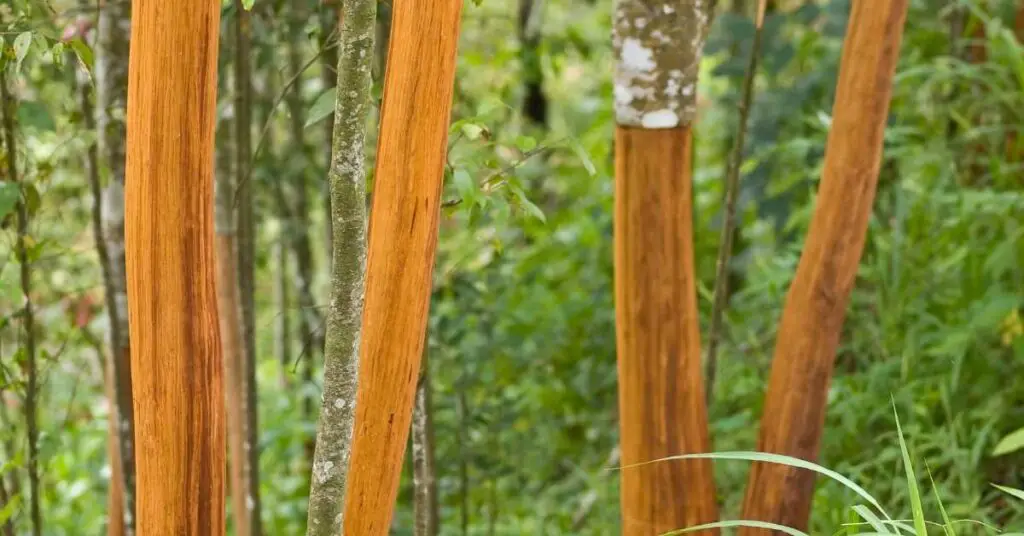The cinnamon tree is a tropical evergreen tree that is native to Sri Lanka, India, Bangladesh, and Myanmar. The bark of the cinnamon tree is used to make the spice known as cinnamon. Cinnamon has a strong, sweet, and warm flavor that is used in many cuisines around the world. The leaves of the cinnamon tree are also used in some cultures for their medicinal properties. Cinnamon trees can grow up to 30 feet tall and live for up to 60 years. The tree thrives in tropical climates with high humidity and average temperatures of 68-86 degrees Fahrenheit. Cinnamon trees need full sun and well-drained soil to prosper. If you are interested in growing a cinnamon tree, it is best to start with a young plant that is 8-10 inches tall. With proper care, your cinnamon tree will provide you with many years of enjoyment.
Where can you buy a cinnamon tree and how much does it cost?
Cost is also an important consideration when buying a cinnamon tree. Cinnamon trees are not typically expensive, but the cost can vary depending on the size and type of plant you choose. Young plants that are 8-10 inches tall usually cost between $20 and $30. Larger plants that are 2-3 feet tall can cost between $40 and $60. The most expensive cinnamon trees are those that are 5 feet tall or taller and can cost upwards of $100. However, these taller trees are typically only found at specialty nurseries or online retailers.
When considering all of these factors, it is best to buy a cinnamon tree from a nursery or retailer that specializes in tropical plants. This will ensure that you are getting a quality plant that is well-suited for growing in your climate. It is also important to read the care instructions carefully before purchasing a cinnamon tree to make sure that you can provide the necessary environment and care for the plant.
What are the things to consider when buying a cinnamon tree?
When buying a cinnamon tree, it is important to consider the climate where it will be grown. Cinnamon trees thrive in tropical climates with high humidity and average temperatures of 68-86 degrees Fahrenheit.
The tree also needs full sun and well-drained soil to prosper. If you do not live in a tropical climate, you can still grow a cinnamon tree by planting it in a pot and keeping it indoors. When choosing a pot for your cinnamon tree, make sure that it is at least 18 inches wide and has drainage holes. It is also important to use a potting mix specifically designed for container plants.
Another thing to consider when buying a cinnamon tree is the size of the plant. Cinnamon trees can grow up to 30 feet tall, so it is important to choose a plant that is the appropriate size for the space where it will be grown.
How to care for your cinnamon tree, including watering and fertilizing
Cinnamon trees are beautiful and fragrant, and they make a great addition to any home. But like any other plant, they need proper care to flourished. Here are some tips on how to care for your cinnamon tree.
When it comes to watering, cinnamon trees are relatively drought-tolerant. However, they will need extra water during periods of extended dry weather. The best way to water a cinnamon tree is to soak the ground around the tree, making sure the roots get a good soaking. Then allow the top layer of soil to dry out before watering again.
Cinnamon trees also need to be fertilized regularly to ensure healthy growth. A balanced fertilizer should be applied every six months or so. If you notice the leaves of your cinnamon tree turning yellow, that’s an indication that it needs more fertilizer. You can either add more fertilizer to the soil or feed the tree with a liquid fertilizer solution. With proper care, your cinnamon tree will thrive for years to come.
What are the benefits of having a cinnamon tree in your home or garden?
Cinnamon trees are not only beautiful and fragrant, but they also have many benefits. Along with being a delicious and versatile spice, cinnamon also has a number of benefits for your health. For example, cinnamon has been shown to help regulate blood sugar levels, making it an ideal addition to the diet of those with diabetes. Additionally, the unique aroma of cinnamon has been shown to boost cognitive performance and enhance memory. Cinnamon is also a powerful antioxidant, and research suggests that it may be effective in fighting inflammation. Finally, cinnamon is often used as a natural remedy for colds and stomachaches.
Consequently, there are many good reasons to consider planting a cinnamon tree in your home or garden. Not only will you be able to enjoy the fresh flavor of cinnamon, but you may also reap the rewards of its amazing health benefits.
How to use the leaves and bark of the cinnamon tree to make tea, essential oils, and other products:
Cinnamon leaves and bark can be used to make a variety of different products, including tea, essential oils, and potpourri. To make cinnamon tea, simply simmer a few pieces of bark or leaves in water for 10-15 minutes. For a stronger flavor, you can steep the cinnamon in boiling water for a longer period of time.
Cinnamon essential oil can be made by steeping the bark or leaves in a carrier oil, such as jojoba oil, for several weeks. Once the mixture has steeped, the essential oil can be extracted using a cheesecloth or coffee filter.
Finally, cinnamon potpourri can be made by combining dried cinnamon leaves and bark with other aromatic ingredients, such as cloves and orange peel. This fragrant potpourri can be used to freshen up any room in your home.
Whether you’re looking for a fragrant spice to add to your cooking or an antioxidant-rich addition to your health regimen, cinnamon is a versatile and beneficial ingredient. And what better way to enjoy cinnamon than by growing your own tree? With a little care and attention, your cinnamon tree will thrive for years to come.
Uses for the bark, leaves, and fruit of the cinnamon tree:
The bark, leaves, and fruit of the cinnamon tree can all be used to make a variety of different products. The most common use for cinnamon is as a spice, and the bark can be ground into powder to be used in cooking. Cinnamon leaves can also be used to make tea, and the fruit can be used to make jam or wine.
In addition to being used as a food ingredient, cinnamon has a number of other uses. For example, the bark can be used to make furniture polish, and the leaves can be used as an insect repellent. Cinnamon oil is also effective in treating arthritis and joint pain.
Finally, cinnamon trees are often grown as ornamental plants due to their fragrant leaves and attractive fruit.
As you can see, there are many different uses for the bark, leaves, and fruit of the cinnamon tree. Whether you’re looking to add flavor to your food or seeking a natural remedy for an ailment, cinnamon is a versatile and beneficial ingredient. And what better way to enjoy cinnamon than by growing your own tree? With a little care and attention, your cinnamon tree will thrive for years to come.
Conclusion
There are many nurseries and online retailers that sell cinnamon trees. When choosing a supplier, it is important to research the quality of their plants and make sure they offer a good warranty. Once you have found a reputable source, you can order your tree and have it delivered to your home. With proper care, your cinnamon tree will provide you with years of enjoyment.





